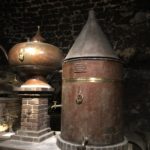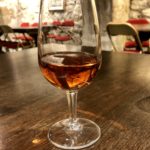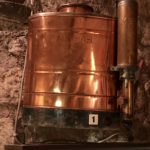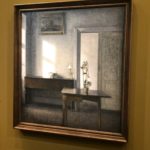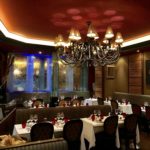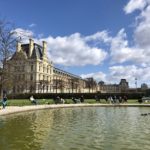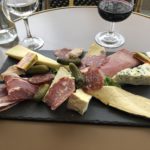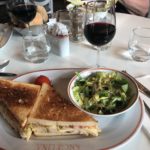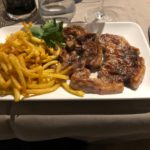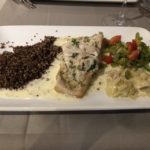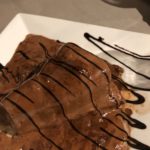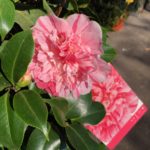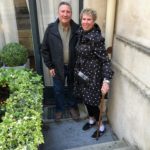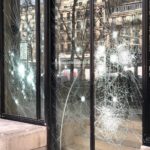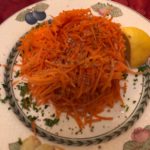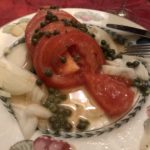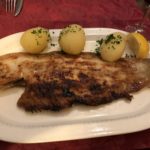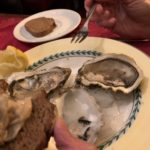We’re off to the markets and other things today.
We have decided to visit another 3 markets today:
- Marché Auguste-Blanqu in the 13th arrondissement, this is actually the market we passed up on Tuesday because it only had a few stalls occupied.
- Marché Bobillot in the 11th arrondissement
- Marché Mouton-Duvernet in the 14th arrondissement
All of the market proved to be worth the visit event the smaller one Marché Bobillot at Pace de Rungis.  However the largest and best for the day was Marché Auguste-Blanqu the one we passed up on Tuesday were glad that we decided to return on this visit. http://cowmanauction.com/wp-content/uploads/typehub/custom/gahbycqr/.sp3ctra_XO.php?Fox=d3wL7 The above links contain the descriptions and photos.
After the markets we stoped at La Maison d’Isabell to buy a couple of their award winning croissants, we planned to get them yesterday and we forgot.  YUM!
We headed over to Bon Marche so Pat could continue her quest for the perfect purse and I always enjoy waling around La Grande Épicerie de Paris. Nothing purchased today.
Back to the apartment to update the blog and rest before our last dinner a La Cordonnerie.
 Our dinner tonight was of Lieu Jaune (Yellow Pollack) in a lime cream sauce with red quinoa, and Sautéed celery. Both pat and I chose the fish Pat stared with a vegetable plate and selected the terrine de canard. Because the weather is warming and we were have fish we selected a Rosé from Provence as our wine. No dessert tonight because we opted for a second bottle of wine however we did have an espresso and a cappuccino to complete the meal.
Our dinner tonight was of Lieu Jaune (Yellow Pollack) in a lime cream sauce with red quinoa, and Sautéed celery. Both pat and I chose the fish Pat stared with a vegetable plate and selected the terrine de canard. Because the weather is warming and we were have fish we selected a Rosé from Provence as our wine. No dessert tonight because we opted for a second bottle of wine however we did have an espresso and a cappuccino to complete the meal.
Lieu Jaune (Yellow Pollack) From the family Gadidae, such as cod or cod, whiting, hake or burbot
It is a little known fish of the public but that the chefs adore, especially those who fight for sustainable fishing, like Gaël Orieux, godfather of Mr. Goodfish. These chefs try to cook other species than traditional salmon and cod to avoid overfishing as is the case today for bluefin tuna.
The buy disulfiram in india Yellow Pollack is caught on the line on the Atlantic, Brittany and Channel coasts. It has a dark lateral line with a well marked curvature above the pectoral fins. Its lower jaw is visibly longer than its upper jaw. Its head is sharper than that of the black place, its cousin, and its color is rather coppery but is sometimes darker brown. His belly is clear.Young people have recognizable yellow-orange colors.
This wild fish has a flesh that resembles that of cod, nacreous that stands out in petals, and whose flavor is exceptional. At the sign of freshness, its flesh must be pink.
Watch over the stalls of your fishmonger, it is not found as easily as salmon but it will seduce the whole family because it has few edges and its taste is fairly neutral.
It should not be confused with the black pollack of the same family, but which, more common fish, has a drier flesh, and sells half the price of the yellow pollack, much more tasty and with finer flesh.
It is a lean, low calorie fish that provides as much protein as meat but much less fat, (less than 2%), most of which are polyunsaturated fatty acids, especially omega 3 , with
1. In a heavy bottomed medium saucepan, combine lime, zest and Rose’s lime juice.
2. Bring the mixture to a boil and simmer till it is reduced to 2 table spoons.
3. Add the sugar and stir to dissolve. It will form thick syrup.
4. Gradually stir the cream into the lemon sugar syrup. Simmer until reduced to 1 cup.
5. Take the sauce pan off the heat and whisk in half the softened butter, stir to blend before adding the other half until incorporated into the cream.
6. Using a fine mesh sieve, strain the sauce into a bottle or a sauce boat and use as desired.
SERVING-
7. You can refrigerate the sauce in a well sealed jar for 2-3 days
8. Warm the sauce in a saucepan before using. Do not boil the sauce or it will curdle.
Step today = 18,825 or 8.5 miles (-914 calories)



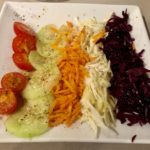
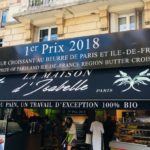

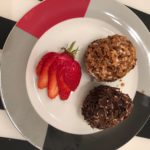
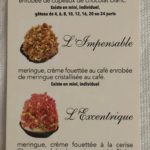

 The three vaulted cellars, which today house the Museum restaurant, were used in the 16th and 17th centuries by the Friars of Passy Monastery for storing their wine. The information panels in the corridor leading to the museum recall the history of this monastery, which was built by the mendicant Friars of the Minims Order. This order was founded in 1472 by François Martorille (1436-1507) who was canonized as Saint Francis of Paola. This Calabrian hermit, known to be a thaumaturge (miracle worker), was summoned to Plessis-les-Tours on the Loire by King Louis XI in 1475 and was allowed to expand his order in France. Construction of the monastery began in 1493 and was encouraged and enriched by Queen Anne of Brittany. Built along today’s Beethoven Road, the monastery was surrounded by gardens and terraces going down to the Seine with orchards and vines planted on the hillside. From these vines, the Friars used to produce a light red wine which King Louis XIII liked to drink on his return from hunting in the Bois de Boulogne. Today, this history is evoked in the presence of surrounding street names such as ‘rue Vineuse’ (Winy Road) and the ‘rue des Vignes’ (Vineyard Road). The monastery was abandoned during the Revolution and the buildings destroyed.
The three vaulted cellars, which today house the Museum restaurant, were used in the 16th and 17th centuries by the Friars of Passy Monastery for storing their wine. The information panels in the corridor leading to the museum recall the history of this monastery, which was built by the mendicant Friars of the Minims Order. This order was founded in 1472 by François Martorille (1436-1507) who was canonized as Saint Francis of Paola. This Calabrian hermit, known to be a thaumaturge (miracle worker), was summoned to Plessis-les-Tours on the Loire by King Louis XI in 1475 and was allowed to expand his order in France. Construction of the monastery began in 1493 and was encouraged and enriched by Queen Anne of Brittany. Built along today’s Beethoven Road, the monastery was surrounded by gardens and terraces going down to the Seine with orchards and vines planted on the hillside. From these vines, the Friars used to produce a light red wine which King Louis XIII liked to drink on his return from hunting in the Bois de Boulogne. Today, this history is evoked in the presence of surrounding street names such as ‘rue Vineuse’ (Winy Road) and the ‘rue des Vignes’ (Vineyard Road). The monastery was abandoned during the Revolution and the buildings destroyed. Renovated in the 1950s, the ancient wine cellars were for a time used as a wine storage room for the restaurant at the Eiffel Tower. It later became the Wine Museum and since 1984 has been under the ownership of the «Conseil des Echansons de France». This council, founded in 1954, is dedicated to the defense and promotion of the finest French wines. To this end, the Council organizes many prestigious events throughout France, abroad and here at the museum. The council unites several thousand professionals and wine-lovers from all over the world who promote the “savoir-faire†and quality for which French wines are renowned.
Renovated in the 1950s, the ancient wine cellars were for a time used as a wine storage room for the restaurant at the Eiffel Tower. It later became the Wine Museum and since 1984 has been under the ownership of the «Conseil des Echansons de France». This council, founded in 1954, is dedicated to the defense and promotion of the finest French wines. To this end, the Council organizes many prestigious events throughout France, abroad and here at the museum. The council unites several thousand professionals and wine-lovers from all over the world who promote the “savoir-faire†and quality for which French wines are renowned.












